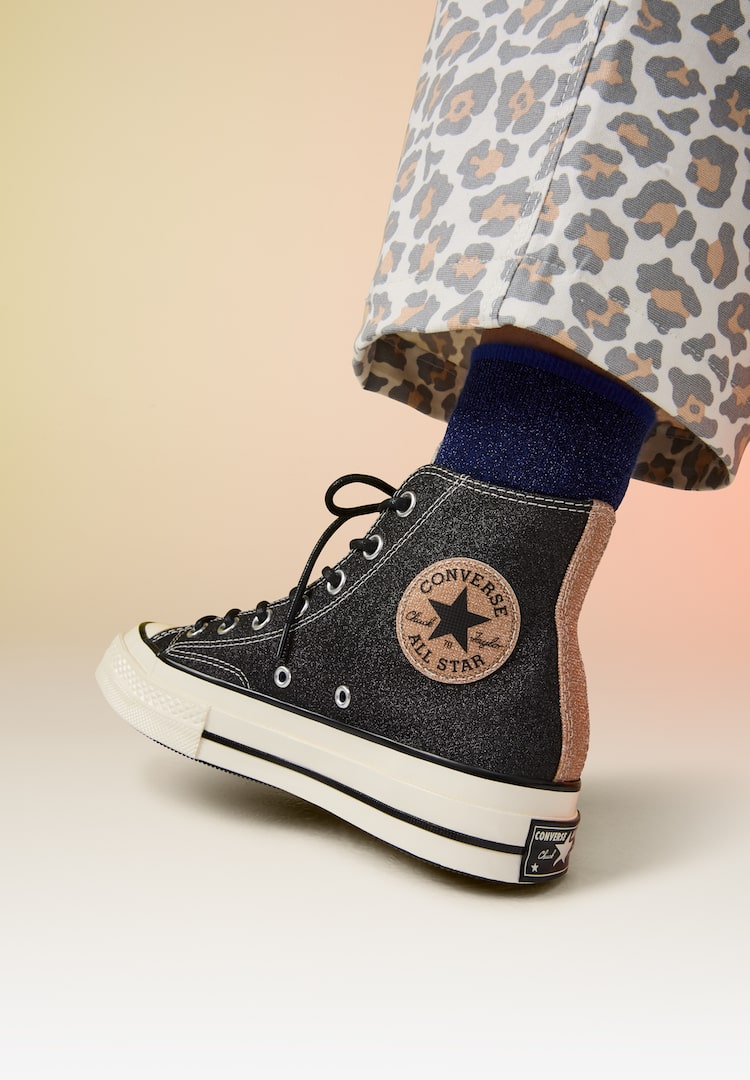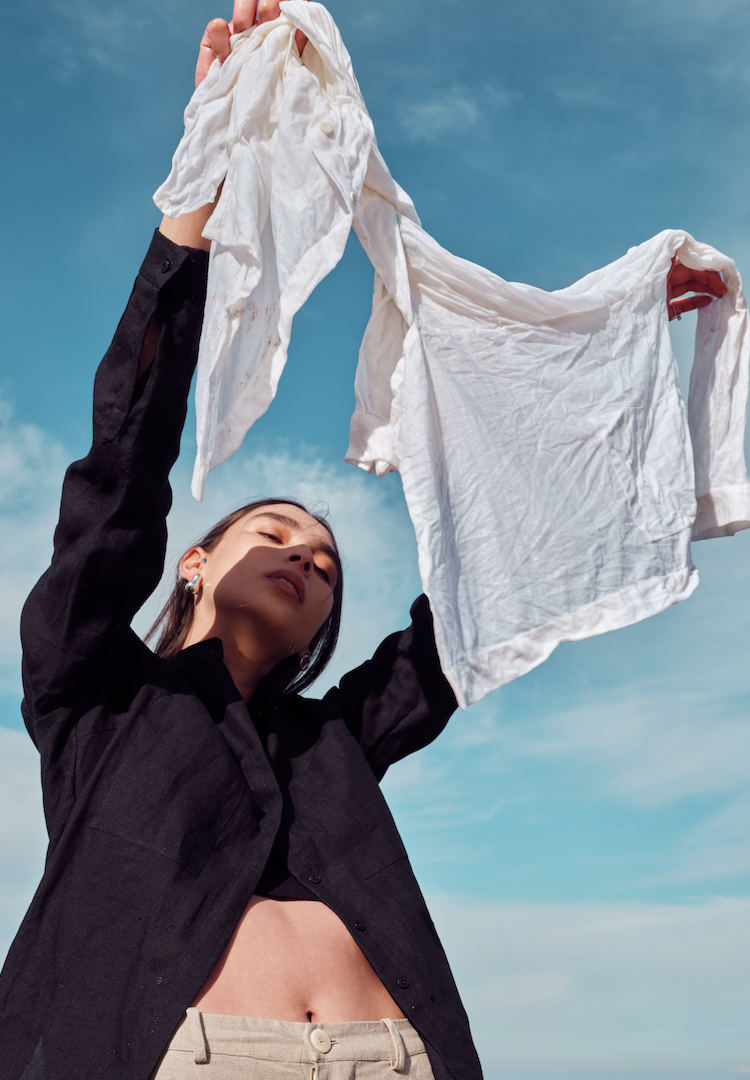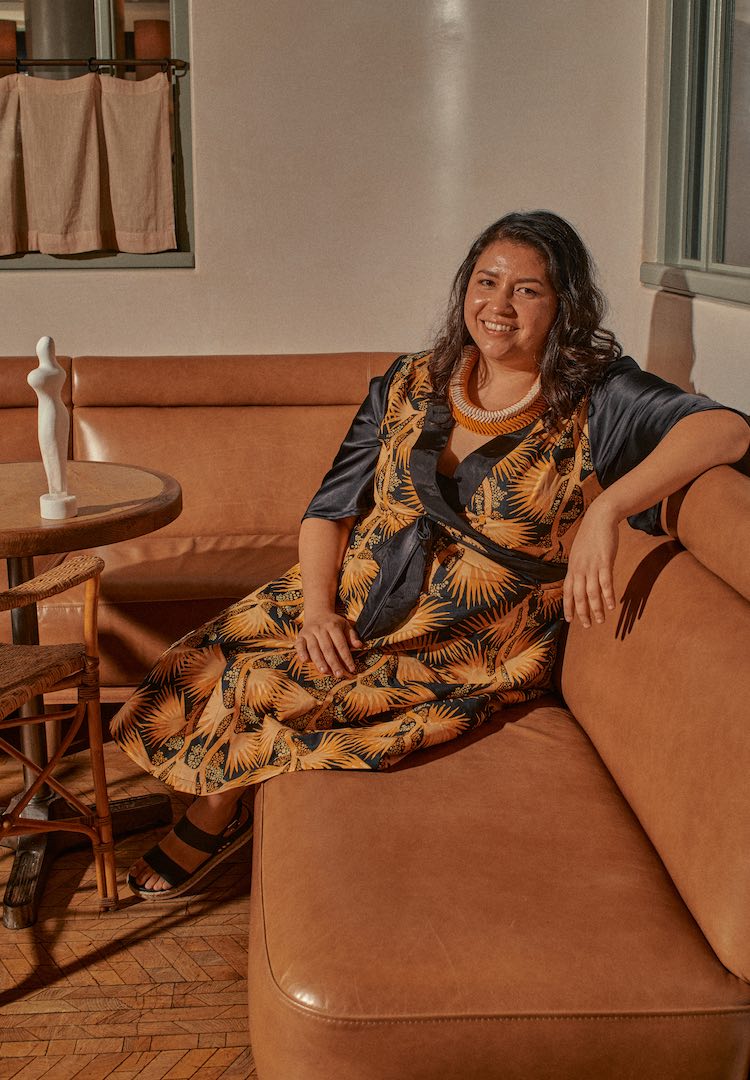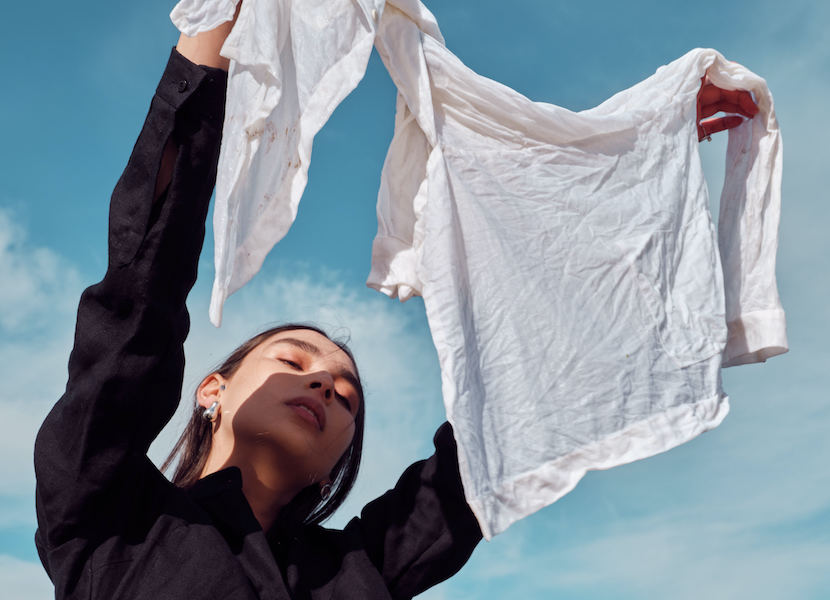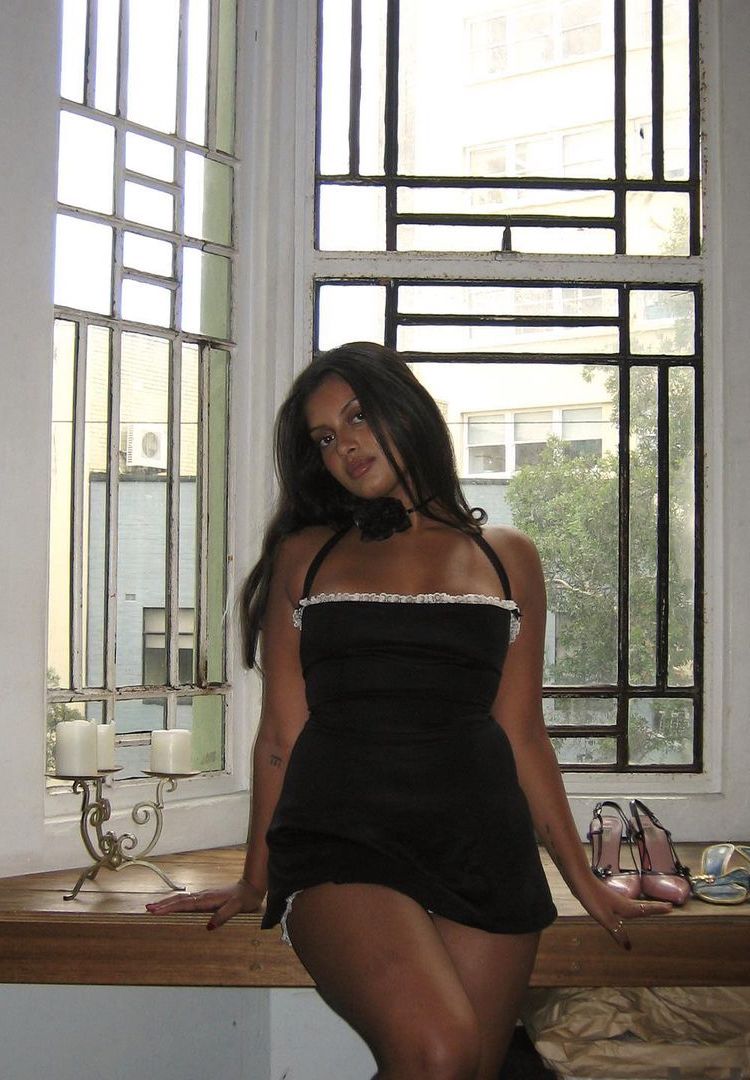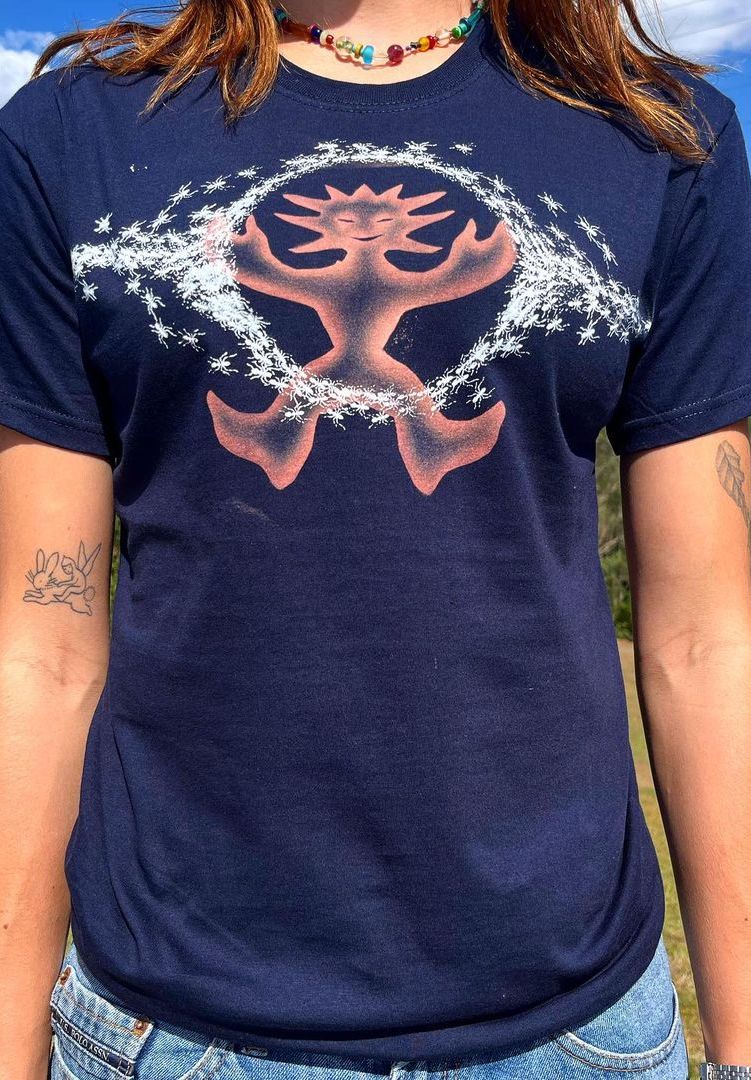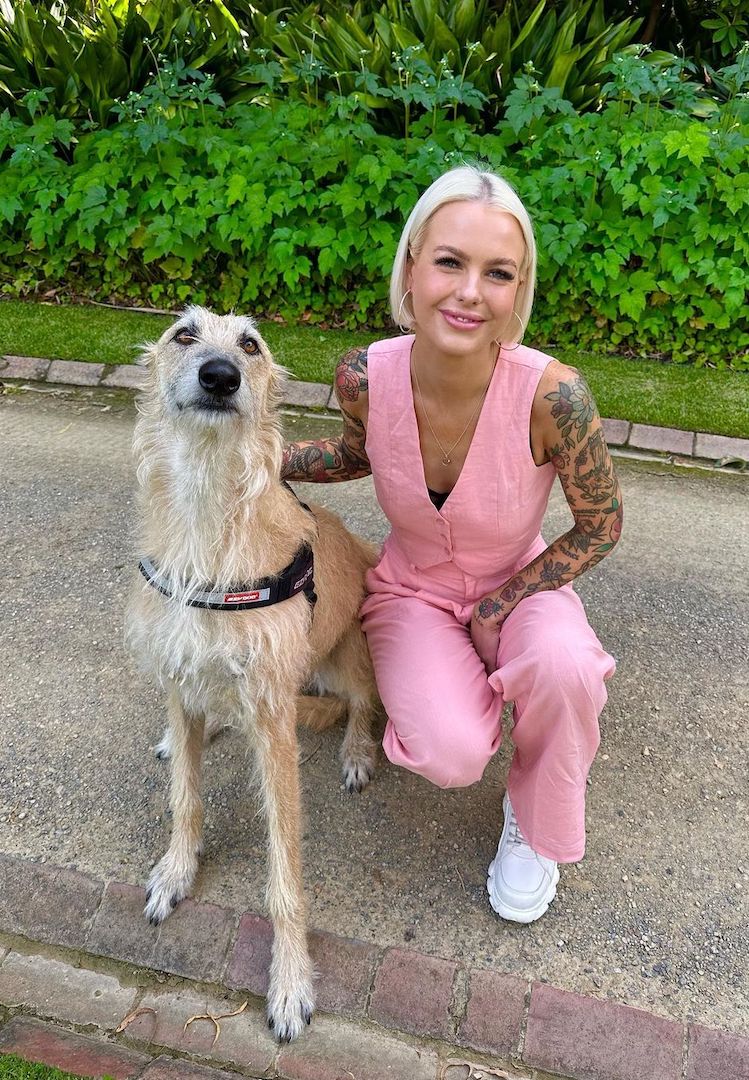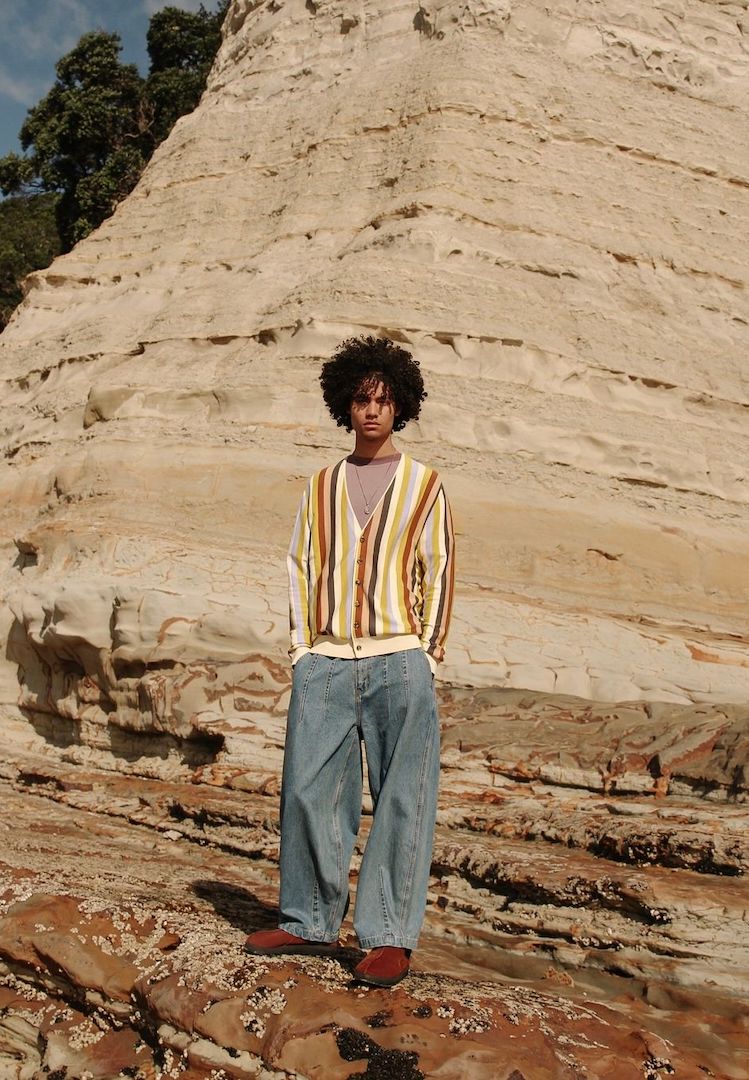Can we really talk about locally-made fashion when most materials are sourced outside Australia?
Photography by Vlad Savin for A.BCH
WORDS BIANCA O’NEILL
For every brand making a sustainability claim, there is a huge amount of offshoring happening behind the scenes.
Earlier this year, the Australian Fashion Council released its 2021 fashion industry report. Beyond the reflections on the devastating effects of COVID on the local industry, and a little posturing about the significant financial and cultural contributions of Australian fashion, I noticed a pretty concerning statistic languishing among the colourful graphs and bold pull quotes: the fact that only 29 per cent of our local businesses sourced at least some of their raw materials from local suppliers.
“The EY Australian fashion and textile industry survey 2021 highlighted that 88 per cent of businesses designed their products in Australia, yet only 29 per cent sourced some of their materials from local suppliers,” the report details. “There is a major opportunity for greater domestic sourcing. Every $1 million in industry production potentially on-shored back to Australia – should this be commercially viable – could generate an economic return of around $1.2 million.”
For more fashion news, shoots, articles and features, head to our Fashion section.
Besides the obvious economic advantages to onshoring our raw materials and manufacturing industries, there’s also the huge sustainability advantage in such a move – after all, polluting air freight and transport add a sustainability cost to businesses who are desperately trying to up their green credentials.
So, can we really talk about sustainable local fashion credibly, when only 29 per cent of raw materials are sourced in Australia? The challenges for local brands are widespread when it comes to sourcing local raw materials and sustainable fibres. While customers increasingly demand their products to be Aussie made, the answer isn’t as simple as ‘Okay, let’s make more of our fabrics here’. For smaller brands, in particular, the issues are complex and varied.
What are the barriers to sourcing raw materials locally?
“The barrier would be in being able to afford to source the things I want,” says Suzan Dlouhy, founder of SZN , a small label based in Melbourne. “Often I’ll find something that is really good, and those companies don’t necessarily want to work with me because I’m too small. Their minimum order quantity can completely buy me out of the game.”
During our chat, Suzan tells me a story about trying to buy a small quantity of knit at a local mill, who told her that they required a minimum order of 1000 metres. It’s the reason many local makers turn to overseas suppliers – because they often don’t impose such onerous minimum order requirements.
Even the option of chipping in on a big order with other small makers becomes complicated – if you’re ordering something unique, do you really want five other Melbourne designers making similar items out of the exact same knit, in the same season?
View this post on Instagram
It’s clear that Australia has gaping holes in the raw materials processing industry. Perhaps a certain cotton isn’t made here, but the resulting organic cotton fabric is. Or perhaps local manufacturers can’t source a certain type of textile locally and have to look to overseas suppliers. It’s a problem that often also complicates the much-loved ‘Australian made’ label – a label that doesn’t necessarily guarantee that 100 per cent of the processes were completed in Australia.
To start with, the current code is confusing at best – there are six groups of representations, each with their own compliance criteria, including the most frequently used terms Product of Australia, Australian Made, Australian Grown and Manufactured in Australia.
It’s fair to say the average consumer wouldn’t know the subtle differences between all six groups – and even within these specific groups, the criteria never requires 100 per cent of the product to adhere to the label, only ‘virtually all’ or the ‘significant’ components.
Supporting the onshoring cycle
So when even the ‘Australian Made’ certification doesn’t ensure 100 per cent Australian made products, how are consumers meant to support a local industry that appears to be struggling to survive?
“The biggest opportunity is in local manufacturing and supporting smart on-shoring,” says Elle Roseby, CEO of Country Road. “80 per cent of our customers want to support Australian-made. We send cotton and wool to Vietnam and China to be spun and woven when it could be done here. We all talk about reducing emissions but the current raw material model conflicts with this, we must support the onshoring cycle.
View this post on Instagram
“For the industry to flourish, and be more sustainable, we need to invest in creating jobs in local manufacturing, as well as in technology and sustainability. We must treat it like a serious industry if we really want to attract the brightest minds and drive real innovation,” she explains.
“Australia has a very small industry left from the old days of making its own fabric,” says Kalaurie Karl-Crooks, Creative Director and Designer of local brand Kalaurie. “There are only a handful of knitting mills and woven mills. It’s actually quite difficult to source fabrics which are grown and milled in Australia. What we do still mill here is very basic.”
Bringing the conversation back to sustainability is essential to reviving the local raw materials and manufacturing industry here in Australia – particularly considering the huge momentum shift we’ve seen in the industry towards sustainable labelling and marketing. However, transparency continues to be key to achieving this and consumers must be wary when looking for Aussie made products.
View this post on Instagram
“The fibre gets turned into a yarn, the yarn into a fabric, and the fabric into a garment – that can literally be the amount of times it crosses the ocean,” Suzan points out. “So if you buy ‘Australian cotton’ from say, Kmart, it’s not guaranteed how many times that’s crossed the ocean. That’s not very clear – that’s not the transparency people want in the supply chain.”
Suzan’s point echoes my recent call for blockchain technology to help with tracking and transparency in the fashion industry. Going even further than ethical manufacture tracing, or raw materials sourcing, blockchain could also potentially provide the industry with an automated sustainability calculator.
Imagine being able to scan two competing garments via a QR code on a tag, and seeing the relative carbon footprint of both at the same time, calculated automatically by an algorithm working in the background.
Unfortunately, this kind of technology seems a way off – after all, historically the fashion industry hasn’t been great at embedding themselves in the world of technology, despite the huge opportunity for blockchain to answer all these pressing ethical questions in a much less resource-heavy way.
“When we decided to, in the late ’80s to mid ’90s, source more clothing overseas and our industries were shutting down, that was when I think we put a cap on our technological advancement in fashion,” says Suzan. “Because if you’re a manufacturing business, you constantly upgrade with your profits. You’re able to get the next best machine… Our manufacturing stagnated.”
So what’s the answer to our raw material sourcing and sustainability woes?
Can we simply pour money into updated technology and training, and hope for the best? “Personally, I believe the industry could be revived through grass roots movements, creating jobs in the sector and awareness,” says Kalaurie.
“A lot of people don’t realise that Australia barely makes fabric anymore and that even if the raw materials are grown here, the fabric is not actually produced here. Reviving jobs in that textile industry would be huge for passing knowledge down to the next generation of fabric technicians to continue turning raw Australian materials into Australia made fabrics and then into Australian made products.
“[But] I don’t think there is anything sustainable about continuously producing product. For me sustainability, is about making do with what you have to create something desirable with the lowest possible impact,” she notes.
It’s something that Courtney Holm, founder of circular label A.BCH, is also passionate about – the idea that the fashion industry needs to look at its output and start there, if it wants to be taken seriously when it comes to sustainability. As part of the community she has built locally, she on-sells raw materials to other small makers when large order quantities would otherwise price them out of the market.
View this post on Instagram
Interestingly, at the same time, she’s working with community hub and production house, The Social Studio, on a fascinating new project which could change the local raw materials game.
“They’re doing a big study in Victoria right now on what raw materials are out there that are just sitting around in people’s warehouses – it’s more like a surplus material situation. We’ve been working on this idea of how to get some of that material moving and actually help with that problem of minimum orders.
“There are so many great Australian made raw materials – hundreds of thousands of metres – that just sit in warehouses not getting used. It’s a really crazy problem that people don’t really know about. There are so many ways that there could be better solutions for small businesses, because they’re either priced out, or minimum order quantity-ed out of making those really good, big steps in sustainability.”
In the end, the approach will have to be multi-faceted. While investing in our raw materials and local manufacturing capability may decrease the impacts of transport on our sustainability goals, it’s a short term solution that only looks at one part of a circular environmental impact chain.
“It’s very hard, and unless you’re totally circular than I don’t think you can claim to be sustainable,” says Kalaurie. “No brand is perfect, there is always room to grow – but doing your best is important.”
Learn more about circular fashion here.

